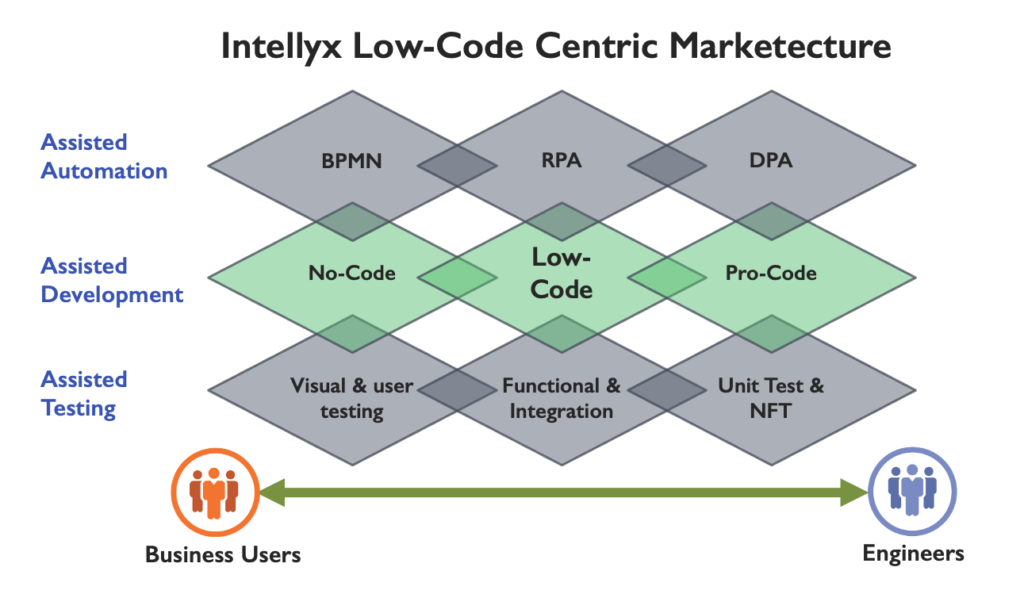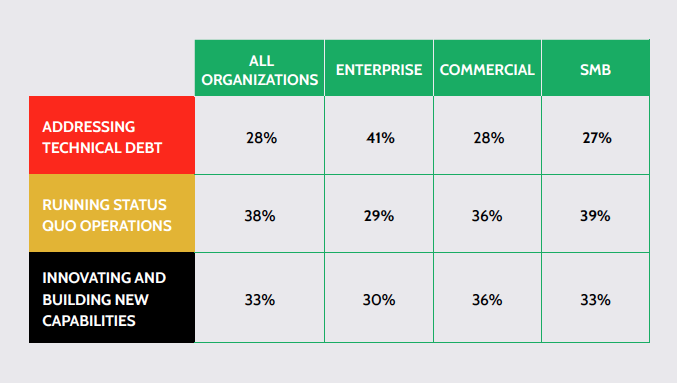 Will enterprises go loco for low-code, or will the whole concept someday become a no-go?
Will enterprises go loco for low-code, or will the whole concept someday become a no-go?
Analysts will throw around a variety of terms and definitions for what constitutes Low-Code. Vendors may tell you that low-code is exactly what you need, if they think you are that kind of customer. But where should you start in thinking about your own enterprise’s journey to low-code?
Low-Code has always been with us.
Looking at the rate of investment and acquisition in the Low-Code solution space, it seems like this arena has never been hotter. But in another sense, it’s always been with us.
Ever since the first desktop applications appeared, software companies have sought a way to endow professionals who didn’t have the time or inclination to learn C with the ability to build and design functionality.
Before RAD and 4GLs appeared on the scene, there was Visio and some VB tools on Windows, and Hypercard on the Mac. Even Excel started a revolution among skilled spreadsheet wizards armed with a few macros. These early forms of low-code were pretty localized in orientation, predating the explosion of content yet to come via internet services.
Modern low-code, which is where we focus our analysis, has serious digital transformation requirements to meet, beyond simply putting drag-and-drop software development tools in the hands of ‘citizen developers.’
Low Code is on a Continuum
According to my colleague Jason Bloomberg, Low-Code is on a continuum between No-Code (tools requiring no coding at all) and Pro-Code (tools that ease developers in reusing code or leveraging development skills).
You might also see the continuum as a series of booleans, which would address the functional overlap between the conceptual no-low-pro-code categories.
Taking it a step further, I’d like to connect the low-code trends boolean to similar movements in the neighboring spaces of process automation and application testing, like so:
The above argyle pattern highlights the parallels between the low-code spectrum of ‘assisted development’ solutions, and the closely related business process automation and testing spaces, which share several commonalities including a business user-centric or ‘no-code’ point-and-click type of simplicity, and an engineering-centric end requiring deeper technical knowledge.
In fact, we have seen several leading assisted development players arise from testing or automation tools that found their stride in low-code, and vice versa.
What will drive further Low-Code adoption?
Low-code solutions arose from the natural desire of every business to get ‘all hands on deck’ and become productive in delivering on the needs of customers, given constrained IT resources and budgets.
Beyond that desire, there are several major challenges that call for a low-code approach:
1. Technical debt. By far, this is the grandaddy of low-code challenges. The need to maintain existing systems, and retire or refactor obsolete or malfunctioning application code, quite simply takes up the bulk of most established companies’ IT resources.
I took this chart from a recent Outsystems survey on stopping technical debt, but you can easily extract the high cost of technical debt from a visit to any enterprise with a significant amount of legacy architecture. When only one-third of an organization’s IT budget and/or time is spent innovating new capabilities, that leaves the business struggling for fresh air.
2. Integration. Many low-code tools started out from an integration perspective: allowing teams to stitch together and move data between multiple tools or services to provide new functionality that wasn’t readily available before.
Robust low-code integration means even non-developers can discover, test and include both internal core systems and external services into application workflows, without having to understand how to construct their own APIs. Indeed, in evaluating low-code vendors, you should always try digging past the ‘wall of logos’ of adapters to make sure that your CRM or OMS is effectively supported for other customers as well.
3. Security. An ungoverned development environment quickly becomes an unhappy development environment when a critical security flaw is exposed. SecOps teams are also extremely resource constrained, and have difficulties figuring out exactly how to authorize conventional development teams for environment access, much less fulfilling low-code citizen developers with business or departmental level access.
Ideally, modern low-code solutions can ease this security management burden, with role-based access controls categorized at team and functional responsibility levels, so all participants can move fast without breaking things. Fail to do security right, and you will either get hacked, or get Rogue IT as teams run off to do-it-anyway without draconian oversight.
4. Functional integrity. This is where the rubber meets the road. What was formerly a manually coded process, or a rote process hidden within a monolithic business silo, needs to be built or rebuilt by business domain experts inside the prospective low-code platform.
Whether the newly encoded functionality is vertical in nature (e.g. specific to the automation or healthcare industry) or aligned to assist a horizontal business function like HR or finance, the low-code platform should provide adequate ‘safety bumpers’ in the form of pre-flight testing and early monitoring and feedback, so owners can be alerted if any application is going off track.
The Intellyx Take
If Low-Code was just about reducing labor costs or IT resource constraints, the space would gradually be consumed by adjacent development tools becoming easier to use, or automation tools becoming robust enough to define applications.
I firmly believe the ability to bring the intellectual capital of business expertise to bear within our application estates might just be the biggest game-changer for the future of low-code.
Where the code ends, a new opportunity begins.
Hey! Upcoming event — For more of this, check out an upcoming session I’m doing for SD Times: “Demystifying Low-Code: Where to Start?” for Low-Code/No-Code Developer Day 2021. It looks like we’ll be joined by leading vendors like WSO2 and Outsystems, as well as many customer and service provider experts in low-code enablement.
© 2021, Intellyx, LLC. Intellyx retains editorial control over the content of this article. Get our Cloud-Native Computing poster. If you are a vendor seeking coverage from Intellyx, please contact us at PR@intellyx.com. Image sources: Jason English (Low-Code Argyle), Outsystems (Technical Debt survey), and trains from Found_in_attic and Gary Todd, Flickr open source.





